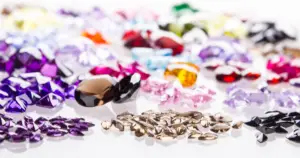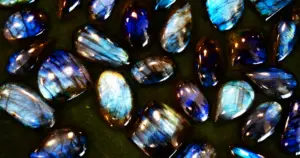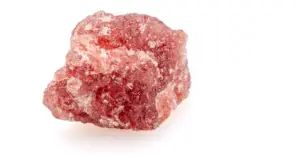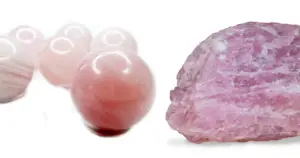How to Tell if Tourmaline is Real or Fake in 7 Easy Ways
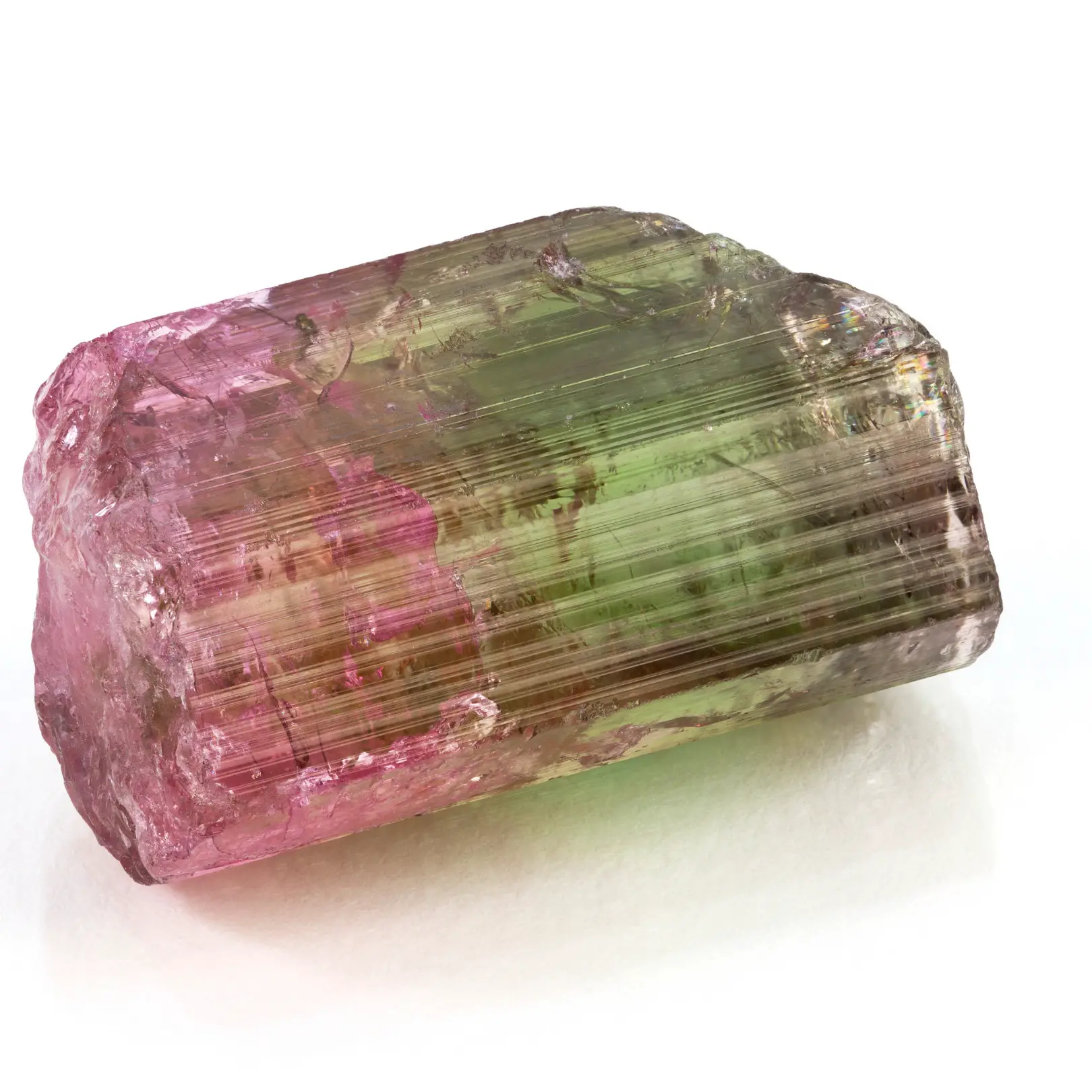
‘Tourmaline’ originates from the Sinhalese word tummala, meaning mixed-colored stones, named so because tourmalines were often confused with other gems. In this article, you will learn how to tell if a Tourmaline is Real or Fake.
Tourmaline is a gem that is so multitudinous and valuable across most of its varieties that it can hardly be industrially reproduced but continues to be imitated using cheaper materials like glass and plastic.
Do you have a suspect piece of Tourmaline in hand? Are you a hobbyist trying to buy quality Tourmalines?
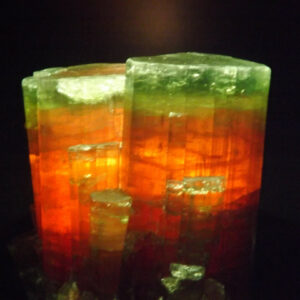
There are nine distinct mineral species belonging to a group and a wide variety of names that have been applied to specific color varieties.
Due to the variety of chemical compositions found in Tourmaline stones, its synthetic production in labs is not very economically viable. Therefore, the threat of synthetic material being sold as Tourmaline is relatively low for this gemstone.
Due to its high regard as a collectible stone, Tourmaline is typically faked in materials that vastly differ from natural Tourmaline’s physical and optical traits, such as glass and plastic.
If you are looking to buy genuine Tourmaline, you are in for a ride.
Read about the History, Properties, Benefits and Uses of Tourmaline here.
Table of Contents
How to Tell if a Tourmaline is Real or Fake?
1. Understand how Colour Affects Nomenclature
Tourmaline crystals come from colorless to black. These crystals are frequently color-zoned along their length (bicolor, tricolor, particolor, and so forth) or concentrically zoned.
The tourmaline group members with critical ornamental applications which you are likely to find in the market when looking for a Tourmaline are elbaite, dravite, uvite, and liddicoatite.
In addition, Schorl, a black group member, is sometimes fashioned or the crystals collected for their shiny black appearance.
- Dravite is usually black to brown, and may sometimes it is colorless.
- Uvite is black, brown, and green and usually appears in dark colors.
- Schorl comes in black, blue, or blue-green.
- Buergerite always appears in dark brown to black, with a bronze-colored iridescence or Schiller under the crystal surface.
- Elbaite comes in a vast range of colors and shades.
- Liddicoatite has been considered elbaite (from Madagascar) for years but turned out to be a calcium analog of elbaite.
- Chromdravite, as might be expected, is an intense dark green colored Tourmaline from Russia.
2. Look for Pleochroism
Pleochroism means ‘more colors’. When a gemstone shows two or more colors when viewed from different angles, it is said to be pleochroic.
What is the difference between pleochroism and Colour Zoning? Pleochroism is not the same as color zoning, which is the presence of multiple colors within a crystal.
Colour zoning typically occurs due to the presence of various minerals in a crystal, while pleochroism has to do with how a crystal responds to the colors present in white light.
You can observe pleochroism by moving the stone in your hand under light or taking a picture of your crystal. If it looks like it is reflecting different colors from different angles, it is likely to be a real Tourmaline stone.
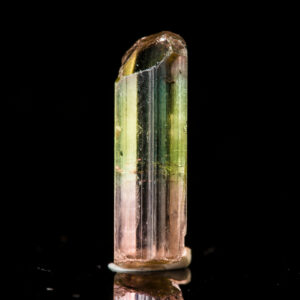
Tip: Pleochroism is especially strong in dark green and brown tourmalines.
Pale-colored Tourmaline shows weak pleochroism. When light travels along the length of a real Tourmaline, it will always show a deeper color than when it is observed passing at right angles to this direction.
A very interesting pleochroism observed among some Tourmalines is called the Cat’s eye effect, which occurs when inclusions present inside Tourmaline cause the light passing through it to form a thin band across the surface of the stone. This looks very similar to the pupil on a cat’s glass eye.
Can Tourmaline be in the Sun? Read here.
3. Observe the Luster of your Stone
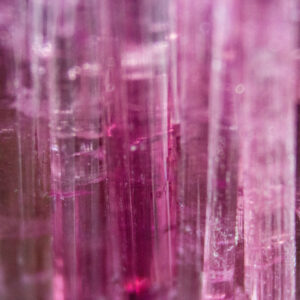
Tourmalines, regardless of their mineral composition, have a vitreous luster, which means that when their surfaces interact with light, it gives a glassy finish. One way to identify fake Schorl, which is a black-colored Tourmaline, is that the fake stones are often marketed as having metallic or matte luster to them, which is likely to be a fake opaque black rock.
4. Check for Hardness
The hardness of most Tourmaline stones ranges from 7-7.5 on the Mohs scale. If you are procuring an uncut specimen of Tourmaline, you can check for its authenticity by scratching it against the glass. If it leaves a scratch on the glass, it is a real Tourmaline.
Fakes sold as Tourmaline are typically made of glass or plastic and will not be able to scratch themselves.
Can Tourmaline go in Water? Is Tourmaline Water Safe? Read here.
5. Try to Locate the Place of Origin of your Tourmaline
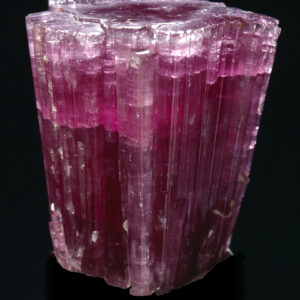
If you are buying Tourmaline from a gem dealer or gemstone expert, be sure to ask for its place of origin.
This is a great way to connect with the biography of your gem and ascertain its originality.
Here are a few things about the geographical occurrences of various varieties of Tourmaline that you can keep in mind while buying one:
1. Sri Lanka: Produces yellow and brown crystals; this is the original source of gem tourmaline
2. Myanmar: The Mogok area produces red tourmalines, pink elbaites, and brown uvites.
3. Russia: Known for its blue, red, and violet crystals in decomposed granite and chromdravite (dark green) from Central Karelia
4. Brazil: In Minas Gerais and other states, usually elbaite, in a vast variety of colors and sometimes large crystals; also bicolor, Catseye, watermelon tourmaline.
5. Kashmir: Known for its Green elbaite crystals
6. Nuristan, Afghanistan: Produces superb gem elbaite in shades of blue, pink, green, and even emerald green.
7. Namibia: Fine elbaite of rich green color (called chrome tourmaline).
8. Madagascar: Liddicoatite in a range of colors, and shades; crystals often concentrically zoned with many color zones, triangular in outline; many crystals enormously sized.
9. Kenya: Red and yellow dravite, among other red-colored Tourmalines
6. Look for Inclusions
A gemstone inclusion is any material that is trapped inside a stone during its formation. Tourmaline shows very distinct shapes and sizes of inclusions that can never be faked or replicated industrially. So this is a foolproof way to tell if your crystal is real or not.
- The most commonly occurring inclusions found in tourmalines are irregular thread-like cavities that may occur singly or in loose, mesh-like patterns. Under high magnification, these look like tubes filled with liquid and may sometimes contain a gas bubble or two.
- Flat films are another common inclusion, most typically in red tourmalines, and if these happen to be viewed at such an angle that the light falling on them is entirely reflected from them, they appear as black patches.
- The tourmalines from Paraíba, Brazil, sometimes contain yellow metallic-appearing inclusions. So if your Tourmaline has a yellow tinge inside it, it is still likely real.
- It is typical of Tourmaline to have two or more colors present in a single crystal, and some are characterized by concentric or layer-like zoning parallel to the length of the prismatic crystals.
Read about the different colored Tourmaline here.
A particolored tourmaline typically consists of a core (the central portion) where two or more colors of the crystal meet.
The core of a real Tourmaline crystal will be the palest in color and the strongest part of the stone. This can be observed in ‘watermelon tourmalines’, which occur with a pink central portion surrounded by a rim of green-colored material.
Another type of parti-coloration is where the colors vary in layers parallel to the base of the crystals (that is, perpendicular to the shorter side of the crystal), which may be green at one end and pink at the other, with perhaps a zone of colorless material in the center.
The colors in some of the zoned (parti-colored) crystals are sharply bounded from one another, whereas in other crystals, the colors appear to merge gradually and integrate with distances of about 2 mm or less.
The fake, colored glass will typically have an obvious line of delineation where one color begins, and another one ends and is evenly strong throughout.
7. Observe Stone Sizes and Cut of your Gemstones
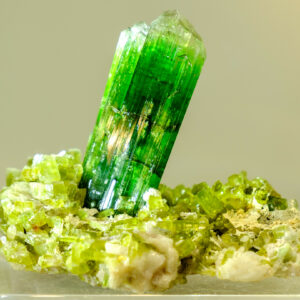
Naturally, occurring Tourmaline crystals are often cracked and flawed, which makes clean varieties with menial inclusions, highly valuable. These typically retail for high amounts.
So if you are being sold a Tourmaline that seems big and is also too clean, it is likely a fake. Small crystals (under 5 carats) are fairly easy to obtain at low prices.
Tourmalines weighing hundreds of carats have been cut out of material from various locations across the world. Brazil and Mozambique produce some of the largest stones.
If you are suspicious of a massive colored stone being sold as a Tourmaline, ask where it was mined from. It is important to keep these in mind when being sold a Tourmaline so that you can fact-check your seller and be assured of the originality of your stone.
Due to its compositional variety, different Tourmalines are cut differently. Before buying, make sure that you understand which stone is being sold in which cut to maximize your money’s worth and avoid fakes.
- The mixed cut, which involves a step-cut pavilion and a cut crown on top, is commonly used for Tourmaline.
- With intensely pigmented blue and green crystals as well as for longitudinally zoned particolored Tourmaline, the trap cut, as shown in the adjacent picture, is used.
- The watermelon type of concentrically zoned Tourmaline is often fashioned into thin, polished slabs to be used in drop earrings and cuff links.
- Much flawed Tourmaline is fashioned into beads or carved into small figurines. So bead-shaped Tourmaline is typically cheaper than raw or carved varieties.
- Crystals that show the potential of chatoyancy or cat’s-eye effect are usually always polished into cabochons.
Another frequently searched question is Black Obsidian vs Black Tourmaline, to know click here.
Final Comments
Tourmaline is a highly prized gemstone because it is usually inexpensive and occurs in a vast array of colors.
The colors, as we have observed, are due to an almost unbelievable complexity of chemical composition. Schorl, for instance, the black Tourmaline, was used in mourning jewelry during the Victorian era, a practice little used today.
These include color, pleochroism, luster, hardness, and inclusions. The most commonly occurring inclusions in almost all Tourmalines are the tubes that, when densely packed, produce a chatoyancy or Catseye effect in cabochons.
The eye in Cats eye tourmaline stones can look like an influential, silken band set against the rich coloration of the gem. Make sure to look for the Cat’s eye effect, not only as proof of originality but also as a unique collectible.
There is no cleavage; they do not splinter easily, and the slight brittleness of the material is not a significant problem in wear.
In this article, we have learned some characteristic properties of Tourmalines that can help you separate genuine crystals from fakes. Share this article with your loved ones.
Read about the Amazing Benefits of Tourmaline here.
